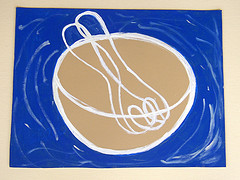Did you know you have a specific teaching style? Do you know what it is?
 There are many ways to teach. Do you lecture your students, demonstrate exercises or have your students work in groups? The way you teach can be analyzed into different teaching styles. Each style has its own teacher objective and student objective.
There are many ways to teach. Do you lecture your students, demonstrate exercises or have your students work in groups? The way you teach can be analyzed into different teaching styles. Each style has its own teacher objective and student objective.
Here is a simple breakdown of each style and how it can be utilized in the studio or classroom:
Teaching Style Categories
Formal Authority
This style is used for lectures. The teacher gives the information and the students receive it. There is no participation by the students. The material is not meant to be analyzed or discussed but is offered as fact.
Demonstrator
The teacher demonstrates and the students observe and participate in the class. The teacher is still the source of information but the students have an opportunity to be more involved in the process.
Facilitator
The teacher focuses on activities in which the students are working in partners or groups. This is more student centered with the students solving problems and making discoveries. The teacher encourages, helps and guides the students towards their given task or goal.
Delegator
The teacher is available to help the students but the students are responsible for working independently on their own projects. This style has the teacher involved the least and the student taking on the most control.
If you teach dance history you probably choose the formal authority teaching style. If you teach ballet, you probably are comfortable in the demonstrator role. Creative movement teachers can tend to delve more into a facilitator role and if you teach choreography then you might use the delegator style.
But what if you mixed things up a bit?
If you teach a ballet class you can use the formal authority method of teaching to discuss the importance of a plié. You can then use the demonstrator style and model the proper way of performing the plié. Have the students participate in your demonstration by asking questions rather than giving answers. For example, “What are some important things I must remember when I plié?” (Answers may include keeping knees over toes, the pelvis lifted, or other things youve covered in the past). Show the plié incorrectly, allowing the students to give you ideas about how to correct it. Then facilitate and have the students in groups come up with three other ballet steps that make use of plié. If working with teens or adults, you might delegate, having students come back to their next lesson with their own plié exercise to share with the class.
There is no right or wrong style of teaching.
Use different styles to meet different objectives and challenge yourself. Maybe you always rely on being the demonstrator. Try another approach to your lessons and see how it feels and how your students respond.
You might discover a specific style of teaching fits your personality or your comfort zone. It is good to know what you like and how you teach. By exploring other styles you might discover that your class responds better to different or multiple teaching styles. You may find that your little ones respond better to one style while your teenagers respond better to a different style and your adult students respond to yet another style. It is fun to experiment and learn about your students preferences as well as your own. You might be surprised at the results!
Stacey Pepper Schwartz is the Founder and Director of Leaping Legs Creative Movement Programs. The focus of Leaping Legs is to help people regardless of age, experience or ability, become educated about their movement potential, develop kinesthetic awareness, and become more physically fit and healthy together as a family, and community. Leaping Legs promotes its goal through its original Up Down & All Around DVD, teacher training, and school and community workshops. The Up Down & All Around DVD received Dr. Toy’s 100 Best Children’s Products 2009 Award and 10 Best Active Products 2009 Award. The DVD has also been featured in many magazines including Dance Teacher and Dance Retailer News. In its August 2009 issue, Dance Teacher called the DVD “an essential tool for teaching the fundamentals of movement with daily adult-child interactions.” Come visit www.leapinglegs.com to learn more about Stacey and her programs.


